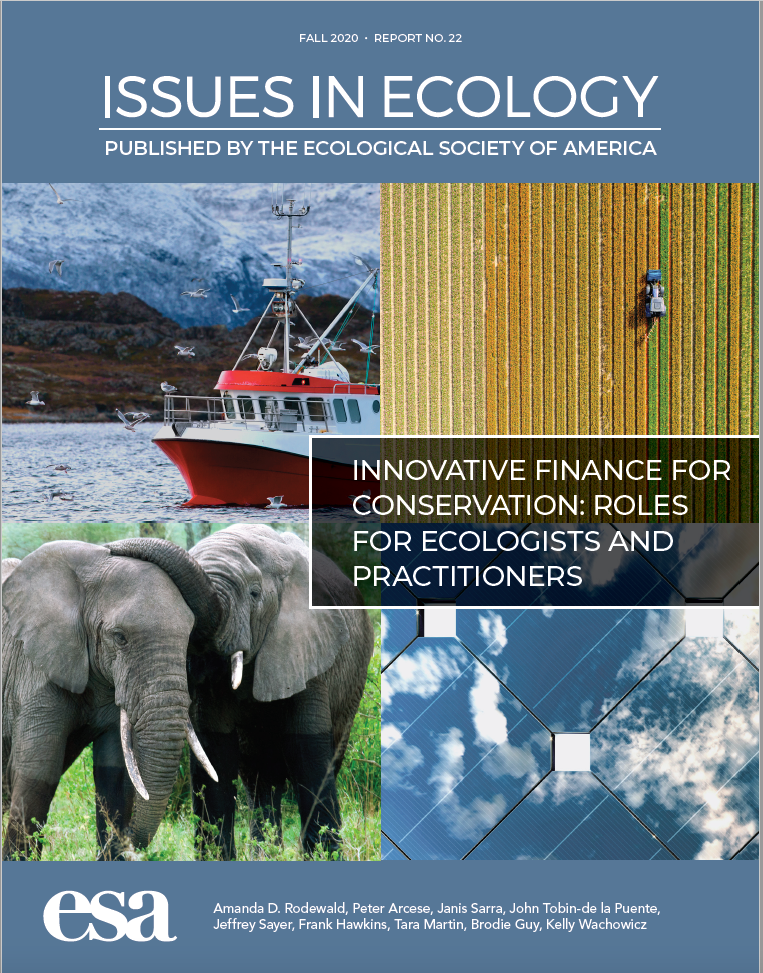“The reality is that public and philanthropic funds are insufficient to meet the challenge of conserving the world’s biodiversity,” said lead author Amanda Rodewald, Garvin Professor and Senior Director of the Center for Avian Population Studies at the Cornell Lab of Ornithology. “Private investments represent a new path forward both because of their enormous growth potential and their ability to be flexibly adapted to a wide variety of social and ecological contexts.”
Rodewald notes that investors are increasingly demanding that environmental sustainability be used, in part, to guide investment decisions. According to the report, there’s more than $9 trillion of managed assets in sustainable investment funds in the United States, a figure that has grown by more than 33% from 2014 to 2016.
Investments in conservation projects can offer positive environmental, social, and financial returns. But the report spells out a number of actions that individuals and organizations working in conservation finance will need to adopt in order to “mainstream” the field, including standardizing the metrics for evaluating projects and establishing safeguards and ethical standards for involving local stakeholders and making sure the community benefits.
Co-author Peter Arcese, a professor at the University of British Columbia and adjunct professor at Cornell University, explains that opportunities in conservation finance are growing for investors interested supporting sustainable development.
“Almost all landowners I’ve worked with in Africa and North and South America share a deep desire to maintain or enhance the environmental, cultural, and aesthetic values of the ecosystems their land supports,” Arcese said. “By creating markets and stimulating investment in climate mitigation, and forest, water, and biodiversity conservation projects, we can offer landowners alternative income sources and measurably slow habitat loss and degradation.”
Rodewald sees a similar landscape of interest and opportunity.
“No matter the system–be it a coffee farm in the Andes, a timber plantation in the Pacific Northwest, or a cornfield in the Great Plains–I am reminded again and again that conservation is most successful when we safeguard the health and well-being of local communities. Private investments can be powerful tools to do just that,” said Rodewald.
The report is No. 22 in a series of reports published by the Ecological Society of America that use commonly understood language to present the consensus of a panel of scientific experts on issues related to the environment. Previous reports in the series are available at https://www.esa.org/publications/issues/.
Funding:
Production of Issues in Ecology 22 was funded by a Purchase Order Agreement (PO#1063592) between ESA and the Charles Dyson School of Applied Economics and Management at Cornell University. Other funding and services were provided by the Peter Wall Institute for Advanced Studies at the University of British Columbia (UBC), the Cornell Atkinson Center for Sustainability, the Cornell Lab of Ornithology, the UBC Faculty of Forestry, and Natural Sciences and Engineering Research Council, Canada.
Download images for media use with articles about this work.


